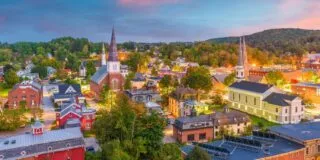Known as the “Bluegrass State,” Kentucky was the 15th state to join the United States of America on June 1, 1792.
It has a population of 4,467,673 people (as of 2019), making it the 26th most populous state.
Kentucky is bordered by the states of Ohio, Tennessee, Virginia, West Virginia, Illinois, Indiana, and Missouri.
With a total of 40,408 square miles (104,659 square kilometers) of land and water, it is the 37th largest state.
The capital of Kentucky is Frankfort, situated to the north of the state.
But that’s enough fast facts about the Bluegrass State for now, though; we’re here to learn some of the more unique facts!
The original source of Kentucky’s name is lost to the past.

One thing that we can say for sure about Kentucky (or Kentucky County at the time) is that it was directly named after the Kentucky River.
When you start to look into the root of the Kentucky River’s name, though, things start to get a little bit murky.
There are two main theories when it comes to the etymology of the name, though.
The most commonly accepted idea is that it is based on a name from the Native American Iroquoian language family, kenhtà:ke, which roughly translates into “on the meadow” or “on the prairie.”
Another popular alternative theory is that its roots lie in the word Kenta Aki, which comes from the Native American Algonquian language family, possibly from the Shawnee people.
It’s been said that Kenta Aki roughly translates into “Land of Our Fathers.”
The region of Kentucky has been inhabited for around 12,000 years.

This is something that hasn’t been proved, though. In reality, we don’t actually know for sure when humans first discovered the region.
Based on the evidence of human activity within the states surrounding Kentucky, it’s safe to assume that it’s been inhabited since at least 10,000 BC.
While many arrowheads have been found in Kentucky, there have been no skeletal remains of Paleo-Indians (the first humans to settle in parts of the USA).
The first archaeological evidence of human activity dates as far back as around 3-4,000 BC when the local indigenous tribes lived a semi-nomadic hunter-gatherer life along the many rivers and streams.
It wasn’t until around 1,000 BC that they developed a more sedentary life, growing simple crops and building structures like shelters.
By 900 AD, villages had sprouted up everywhere thanks to advances in agricultural development, which included planting maize, beans, and squash.
By 1000 BC, many of these villages grew into chiefdoms with populations of 2,000 or more, which developed more advanced building styles and buried their dead in burial mounds which can still be seen today.
The first Europeans to reach Kentucky were the French.

The great French Explorer Rene-Robert Cavelier, Sieur de la Salle, made it as far inland as the region of Kentucky in 1669.
He then claimed it for France, along with all other territories along the Mississippi River Valley.
He explored the region in canoes with 24 other men, making it to modern-day Louisville, Kentucky.
The first permanent white settlement in Kentucky was founded in 1774.
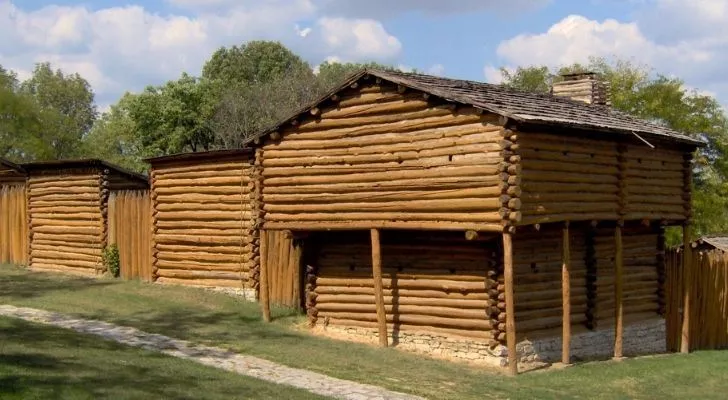
More than 100 years passed between the first time Europeans were seen in Kentucky and when they finally decided to colonize it.
Many explorers passed through the region during this period, mapping out routes and establishing contacts for the fur trading industry.
France lost control of the region to the British following their defeat in the French and Indian war in 1763.
Promptly after this, the governor of Virginia sent James Harrod at the head of an expedition to survey the newly acquired British land.
The expedition of 38 men traveled much deeper inland, reaching the site of modern-day Harrodsburg.
Here Harrod founded the first European settlement in Kentucky, Harrod’s Town, which would later take on the name Harrodsburg.
Kentucky was originally a part of Virginia before it gained statehood.

During the American War of Independence, the new state of Virginia established in 1776 that all land in the state’s borders west of the Appalachian Mountains would be Kentucky County.
This was to be short-lived, as Kentucky County was broken up into the counties of Fayette, Jefferson, and Lincoln in 1780.
These counties felt that they were too distant from the rest of Virginia and were subsequently not taken very seriously.
As such, they regularly petitioned both the Virginia General Assembly and Congress to be made into a separate state.
It wasn’t until 1792 that both Virginia and the US Congress both agreed to the claim, and Kentucky was admitted to the Union as the fifteenth state on June 1st.
Kentucky was caught up in the middle of the American Civil War.

During the American Civil War, Kentucky became a border state, meaning it was a slave state that neither officially seceded from the Union nor joined the Confederacy.
Representatives of a majority of the state’s counties did meet in 1861 and establish a Confederate government of Kentucky.
Still, as the state itself didn’t secede from the Union, this wasn’t considered official, in their eyes at least.
The issue for Kentucky was that opinion was generally divided on the topic of slavery.
Some regions that depended much more on agriculture were strong proponents of slavery, while others were firmly against it.
Although many Kentuckians volunteered to fight on both sides, Kentucky remained neutral throughout the war, and many large-scale skirmishes were fought within its borders.
The late 19th Century was an incredibly turbulent era in Kentucky.

During the Reconstruction Period, Kentucky wasn’t subjected to military occupation, as although it was a slave state, it never seceded from the Union.
This resulted in an incredibly violent end to the century.
A number of chapters of the Ku Klux Klan established themselves in the region and incited violence and death towards any newly freed slaves.
Although the Federal government intervened time and time again, there were more than 115 incidents of lynching, shooting, or whipping of freedmen by white supremacists just between 1867 and 1871.
Racial violence continued to increase throughout the end of the 19th Century, continuing well into the beginning of the 20th.
There were also many long-standing family feuds that often turned into bloodbaths, many of which were continuations of arguments started during the Civil War.
The only US governor to be assassinated was the governor of Kentucky.

In the late 1890s, a Democrat senator called William Goebel gained control of the Democratic party and ran for Governor of Kentucky.
He lost the vote to William S. Taylor, a Republican senator, although it turned out there was good reason to suspect the ballots had been intentionally miscounted.
A committee was formed to investigate the issue, which prompted Republican voters to raise an angry mob of some 1,500 people who then stormed the Kentucky Capitol Building and capture it.
Martial law was declared, with the state militia stepping in to settle the issue.
On January 30, 1900, Goebel was going to the Kentucky Capitol when he was picked out and wounded by a sniper.
The following day while in his hospital bed, he was sworn in as the Governor of the Commonwealth of Kentucky but died from his wounds three days later on February 3, 1900.
Both Abraham Lincoln and Jefferson Davis were born in Kentucky.
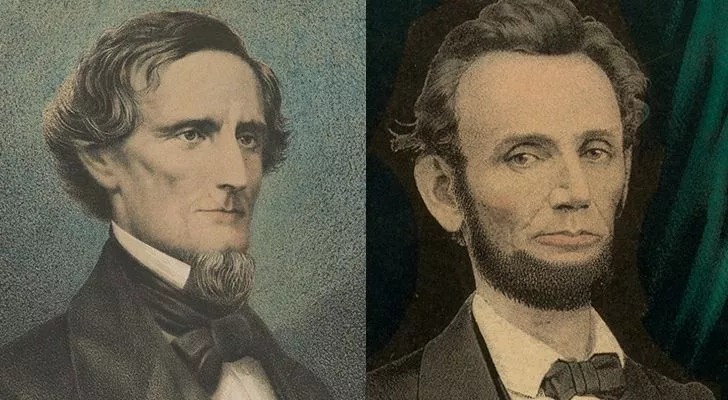
The fact that the Bluegrass State is the birthplace of both presidents, US and Confederate, truly highlights how divided Kentucky was in the run-up to the American Civil War.
Despite their differences, both were born in quite humble log cabins.
Fun Fact: Both of their cabins were later put on a truck together and driven on a tour of the country at the beginning of the 20th Century as a sort of mobile tourist attraction.
Kentucky is blessed with some of the mildest weather in the USA.

The vast majority of Kentucky is lucky to have a very mild, humid subtropical climate, which keeps weather within pleasant levels year-round.
There are, of course, some differences to be found in this large, sprawling state.
The northern regions tend to be around 5 degrees cooler than the south, receiving more rainfall instead.
Kentucky is also rich in boundless nature.

Kentucky is lucky to have an incredibly varied and extensive system of parks, with 45% of the state’s land covered in forests.
The state has one national park, 45 state parks, two national forests, two National Historic Parks, two National Recreation Areas, and 82 Wildlife Management Areas.
It has a total of 37,896 acres (153 square kilometers) of state forest!
Kentucky successfully reintroduced elk into its eastern counties.

It’s hailed as one of the most outstanding wildlife reintroduction programs in the history of the US.
Local populations of elk had become extinct within the region some 150 years previously due to excessive hunting of the animal.
In 1997 the Kentucky Department of Fish and Wildlife Resources attempted to rectify this by releasing elk into the eastern regions of the state.
Their goal was to replenish the number of elk in the region and raise the herd size to 10,000, which was accomplished in 2009.
Kentucky’s nickname has a relatively simple origin.
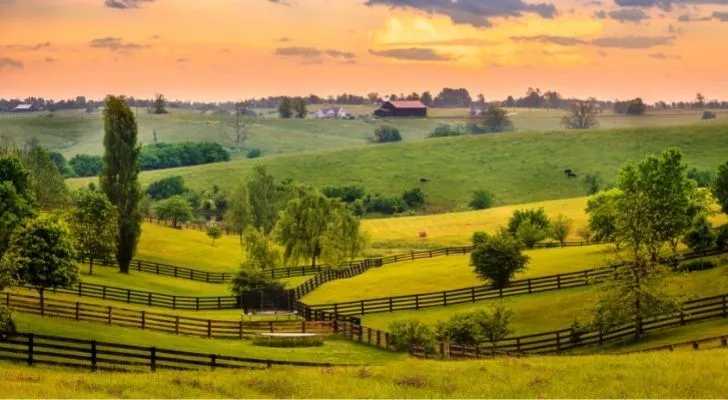
When European settlers came to North America, they brought many seeds with them.
One of the seeds was Poa Pratensis, which would come to be known as Kentucky Bluegrass.
It was planted along with several other seeds as pasture grass, and it adapted well to the local climate.
The grass became known as bluegrass as during the spring, the new blades of grass have a blue-green color to them, which colors the hills of Kentucky a blue-green hue.
There are more barrels of bourbon in Kentucky than there are citizens.
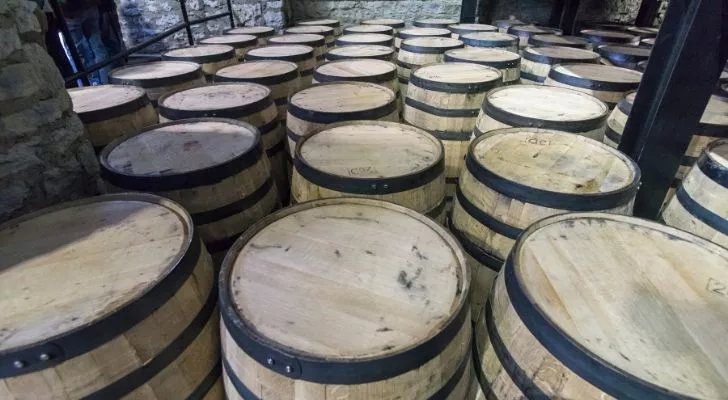
Yes, you heard that right. Bourbon is big business in Kentucky, which has a long history of bootleg whiskey distillation predating the prohibition area.
It goes without saying that the whiskey industry is still absolutely booming.
The state of Kentucky has 4.4 million residents as of 2019, while there are around 5.6 million whiskey barrels found across Kentucky’s many distilleries.
That’s over a million more barrels than people!
Kentucky is a boaters paradise!

If you’re inclined to spend lazy days boating down a river or stream, then Kentucky is the place for you!
The state has more than 1,100 navigable miles (1770 km) of lakes and rivers to explore, which is the second-most in the US, with Alaska coming in the first place.
I’m not sure about you, but I’d rather lazily float down a Kentucky river than a cold and uncomfortable Alaskan one!
Just like many other states within the region, Kentucky has a bloody and violent past.
It’s crucial that we don’t avoid these topics, though, and continue to teach them to future generations to ensure that nothing like this will ever happen again.
While Kentucky used to be a “rough around the edges” kind of state, it’s grown into a rich and diversely populated state that coexists with nature and appreciates it in all its glory!








